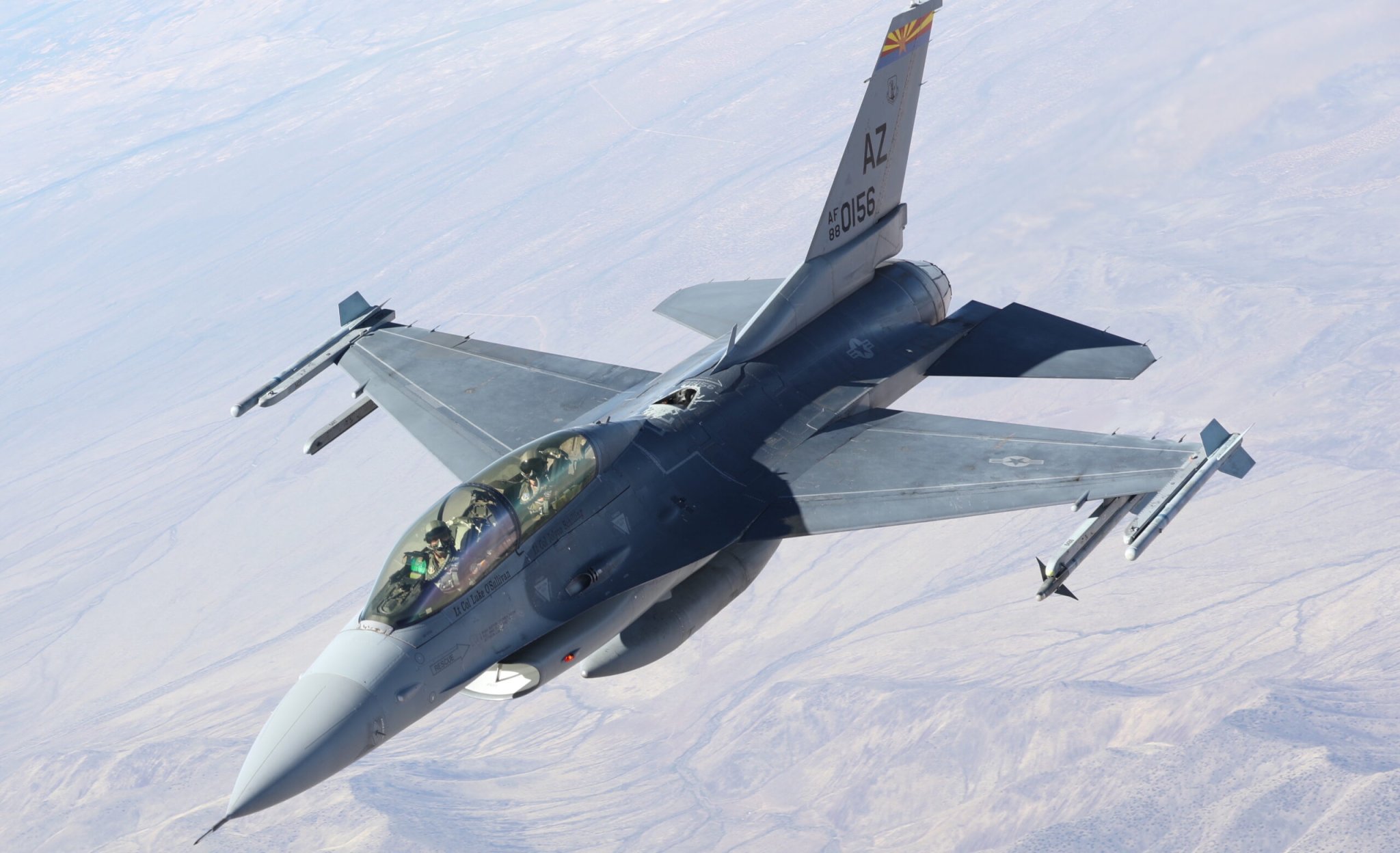

Ukrainian pilots will soon arrive in the US to learn to fly F-16s, a major expansion of American military support of Ukraine in the war with Russia, the Pentagon confirmed Monday. The Arizona Air National Guard’s 162nd Wing will host and teach Ukrainian pilots to fly starting this fall.
“Following English language training for pilots in September, F-16 flight training is expected to begin in October at Morris Air National Guard Base in Tucson, Arizona,” Pentagon spokesperson Brig. Gen. Patrick Ryder told reporters Monday afternoon.
The announcement caps a slow ramp-up in the level and variety of support for the Ukrainian military in the last year, as US authorities approved and delivered increasingly advanced weapons like tanks, drones, air defense missiles, and training. But US officials have stopped short of providing F-16s, one of the US’s premier air-to-air and air-to-ground fighters, and the training needed to fly them until recently.
In August, a series of announcements confirmed F-16s were heading to Ukraine via European allies. Some of the future pilots of those jets will now learn to fly — or at least learn to fly — the F-16 in Arizona.
“The 162nd wing is the Air National Guard’s premium F-16 training wing and they have deep experience in terms of training international pilots,” said Ryder. “They’ve trained [pilots and crew from] upwards of 25 Different nations before so they have experience in this type of effort.”
The 162nd flies both conventional single-seat F-16s and two-seat F-16 trainers as part of its mission to train foreign pilots. The length of training, Ryder said, had not yet been determined and would depend on how experienced the Ukrainian pilots were when they arrived. For brand new US Air Force pilots, he said, F-16 training takes about eight months, beginning after new pilots learn the basics of flying in trainers.
“There’s a series of, essentially, courses that you’re going to have to go through,” Ryder said Monday. The first, he said, is “fighter fundamentals, where they’re going to teach you formation, flying basic fighter maneuvers, weapons employment.”
Along with more advanced flying classes, Ryder said, students take significant ground training to simulate the stress of high-performance fighter planes. “We’ve all seen the images of people going through a centrifuge training to learn how to cope with G-forces,” Ryder said. “There will be additional training on air combat maneuvering, tactical intercepts, close air support, suppression of enemy air defenses, and all of that leading up to your mission qualification training, which then allows your instructor to certify that you’re combat ready.”
The US agreed earlier this month to allow the Netherlands and Denmark to both train Ukrainian crews on the F-16 and donate jets from their fleet. However, those training programs had a limited number of slots for Ukrainian pilots. The Arizona training, Ryder said, will increase the total number of crews in training at once and run in concert with similar training based in the Netherlands and Denmark, both of which fly the F-16 in their own Air Forces.
“We’ve been working and consulting very closely with the Danes and the Dutch all along,” said Ryder. “This was a preemptive move to say, ‘let’s go ahead and lean forward, recognizing that we don’t want it to become an issue in terms of capacity.”
Among US weapons donated to Ukraine, the F-16 has long been on the top of Ukrainian officials’ wish lists. The Ukrainians began the war in March 2022 with a limited fleet of Russian-made MiGs and Sukhoi fighters. Those fighters have suffered attrition through combat and maintenance and Ukrainian officials have said their preferred replacement for lost planes was the F-16.
The F-16’s basic design dates to the 1970s but remains a primary frontline fighter for the US Air Force. The F-16 has also been widely exported to a long list of countries that actively fly it, including South Korea, Taiwan, Turkey, Israel, and Egypt along with half a dozen European nations.
Chairman of the Joint Chiefs of Staff Mark Milley also confirmed the training in an interview with Jordanian television, as reported by Reuters.
“That is moving forward, actually,” Milley said. “There’s a training program in place and they’ll likely receive F-16s … in the not-too-distant future.”
